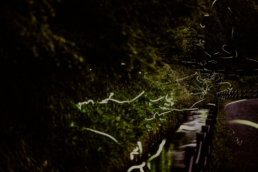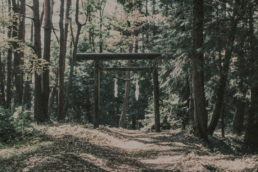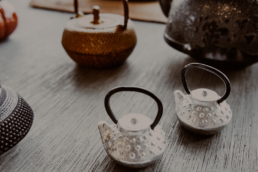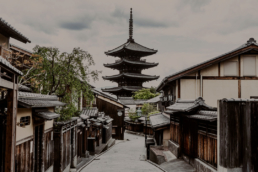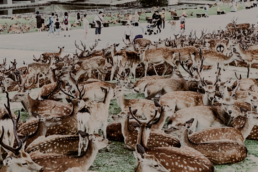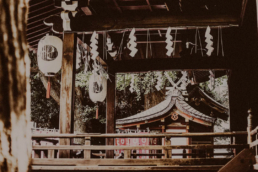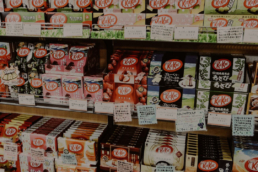Nagano Firefly Festival
With the advent of COVID-19, many events have been cancelled all over the world, but the firefly festival in Japan doesn't stop and this year the luminous insects dance by themselves.
The solitary dance of fireflies in 2020
Author: Erika | Source: Japan Times
It is a magical moment when in Tatsuno, in the Nagano prefecture, the sun sets and thousands of fireflies begin to dance and shine, creating a unique spectacle. Usually, this event brings crowds of visitors to the city, however, due to the coronavirus pandemic, this year the spectators are not allowed to attend this event.
In fact, in this wacky 2020, the dance of incandescent insects takes place without spectators because the event has been cancelled. Nevertheless, although many fans were disappointed, an unusually serene and unique atmosphere was created. In fact, the insects do not stop and continue to shine, turning off and on, dancing in the night air. A natural spectacle that lasts only 10 days at the beginning of summer that marks the last chapter of a firefly's life.
Katsunori Funaki says that "The glow is the courting behaviour of fireflies. They glow is used to communicate between the male and female. During the short period of 10 days, they find a mate and lay eggs for the following year".

In short, the firefly festival is a real date not to be missed. In fact, more than 30,000 perform this magic during those 10 days in Tatsuno, in the centre of Nagano prefecture. Mayor Yasuo Takei says "Historical evidence says that a huge number of fireflies were seen along the Tenryu River between the late 19th and early 20th century. These small creatures were almost extinct in the area due to the strong production of silk industries that created pollution.
However, after the Second World War, the city has worked hard to recreate and restore the suitable environment to protect the fireflies that now attract thousands of visitors during the annual summer festival. "When we have a lot of fireflies, we get a spectacular landscape full of lights, with both stars and fireflies shining reflected in the water," said Takei. A unique event and landscape.
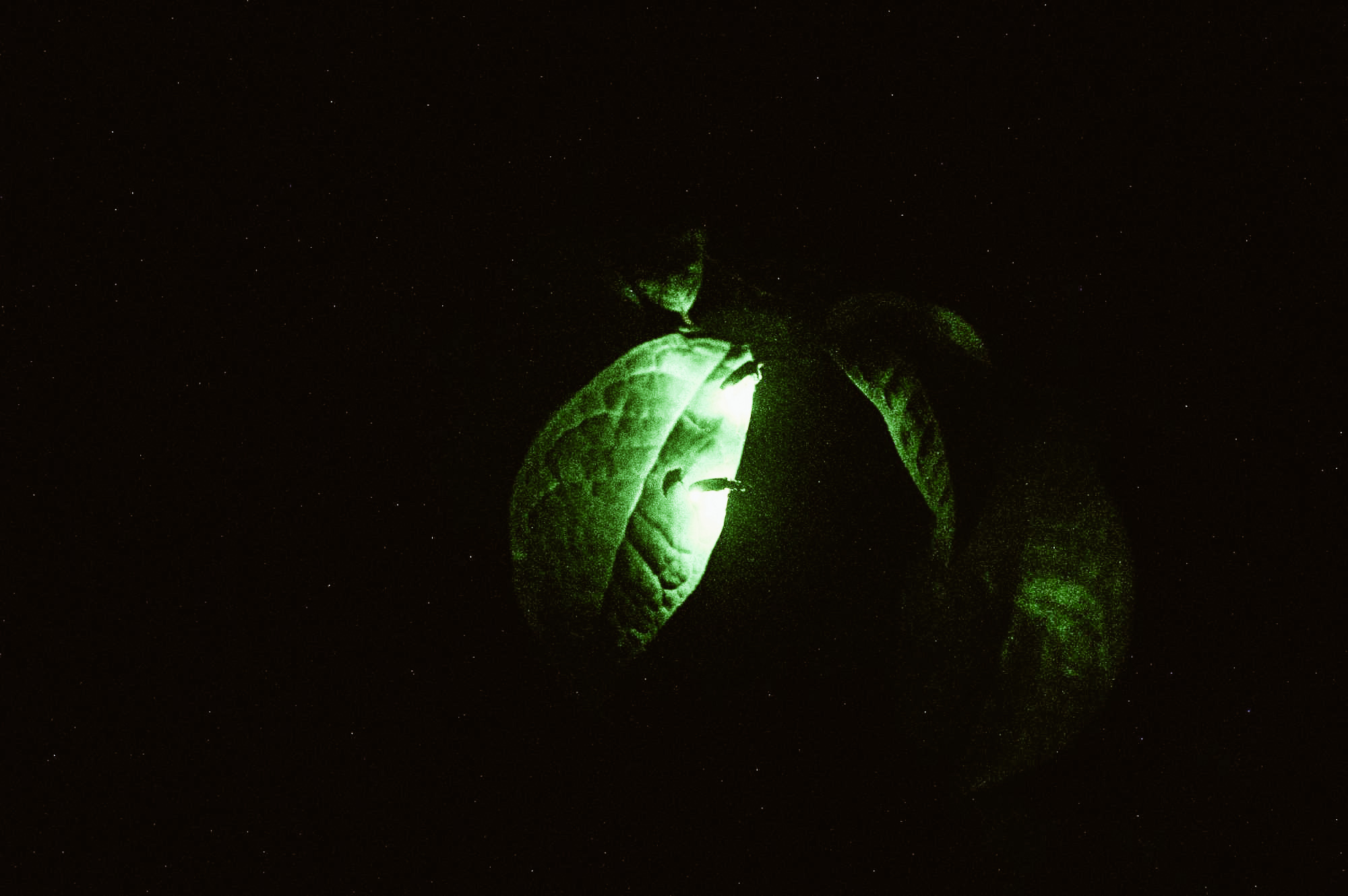
Precisely because of the strong importance that this festival has, the city has created a park with ditches to bring fresh water from the river, with waterfalls and an aquatic house rich in oxygen for insects.
Firefly festivals have been held since the end of June in many parts of Japan, and this ritual of luminous courtship is highly celebrated throughout the country.
"Fireflies are creatures that grow for over a year and fly for only 10 days to leave the next generation before they die," said the festival organizer. "We want to take care of them so that they leave their eggs for next year and we will see fireflies dance wonderfully once again.
Shinrin-yoku, forest bathing
The Shinrin-yoku so loved by the Japanese is what we call "forest bathing" and can be healing and regenerating. This practice, whose major exponent is Dr. Qing Li of the Nippon Medical School in Tokyo, is also becoming very famous here in the West. But let's see in detail what it is.
Shinrin-yoku, the forest bathing loved by the Japanese
Author: Erika | Source: Tokyo Weekender
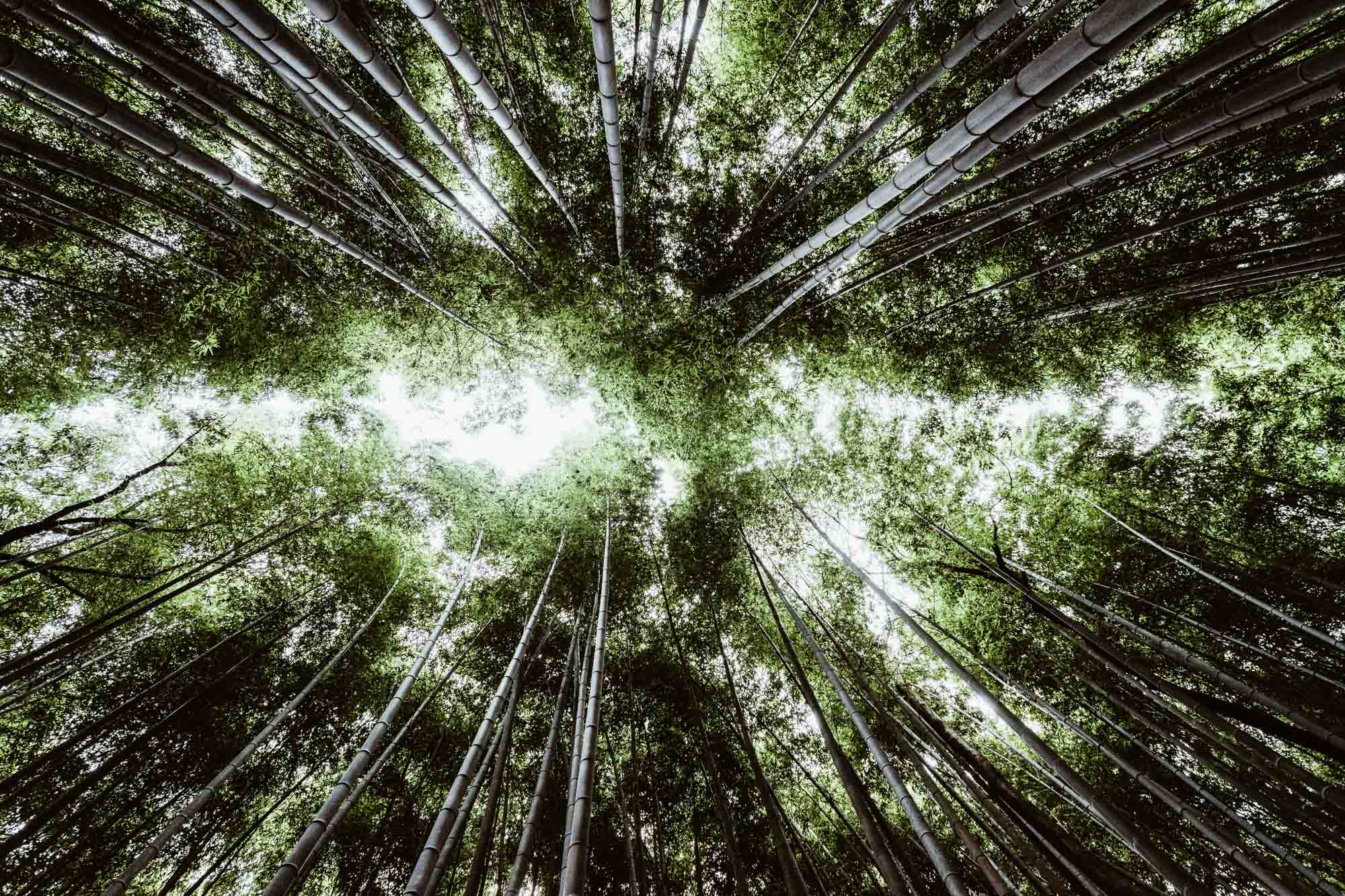
One of the world's biggest health trends at the top of the charts, the Shinrin-yoku has become internationally renowned. However, its diffusion dates back to the late 1980s in Japan. In fact, Forest Bathing has for years been considered a true practice of preventive medicine in the land of the Rising Sun. In support of this, there are numbers of researches conducted around the world that have shown how to spend regular periods of time immersed in the quiet of the woods helps to strengthen the immune defences and prevent diseases But what exactly is this about?
What is Shinrin-yoku, Forest Bathing?
Literally, Shinrin-yoku (森林浴) combines the kanji of "forest" and "bath", and is commonly translated as "bath in the forest". Promoted some forty years ago by the Japanese government, Shinrin-yoku consists of walking in the woods and applying special breathing techniques. However, forest bathing activities are not limited to breathing. In fact, whether you stay active or simply decide to take some time to relax in the forest area, this also brings you back to this practice.
First used in 1982, this term was promoted by the Japanese Ministry of Agriculture, Forestry and Fisheries to encourage healthy lifestyles and protect the nation's beautiful natural ambients. Since 1986, the Forsetale Agency together with the Green Civilization Society has indicated more than 100 areas throughout Japan where this concept of bathing is possible. Even today, there are various techniques to keep healthy, but forest bathing is one of those concepts that goes well with Japanese ideology.
In the early 2000s, several universities and research centres conducted experiments to find out how effective this practice was. The various studies were unanimously positive. In fact, it has been shown how spending time between trees reduces stress, improves mood, lowers pulse rate and blood pressure. But not only that, it also increases concentration and creativity as well as strengthening our immune system.
Perhaps sensitivity, and in particular deeply spiritual and historical respect for the natural world, has made this practice thrive in this nation.
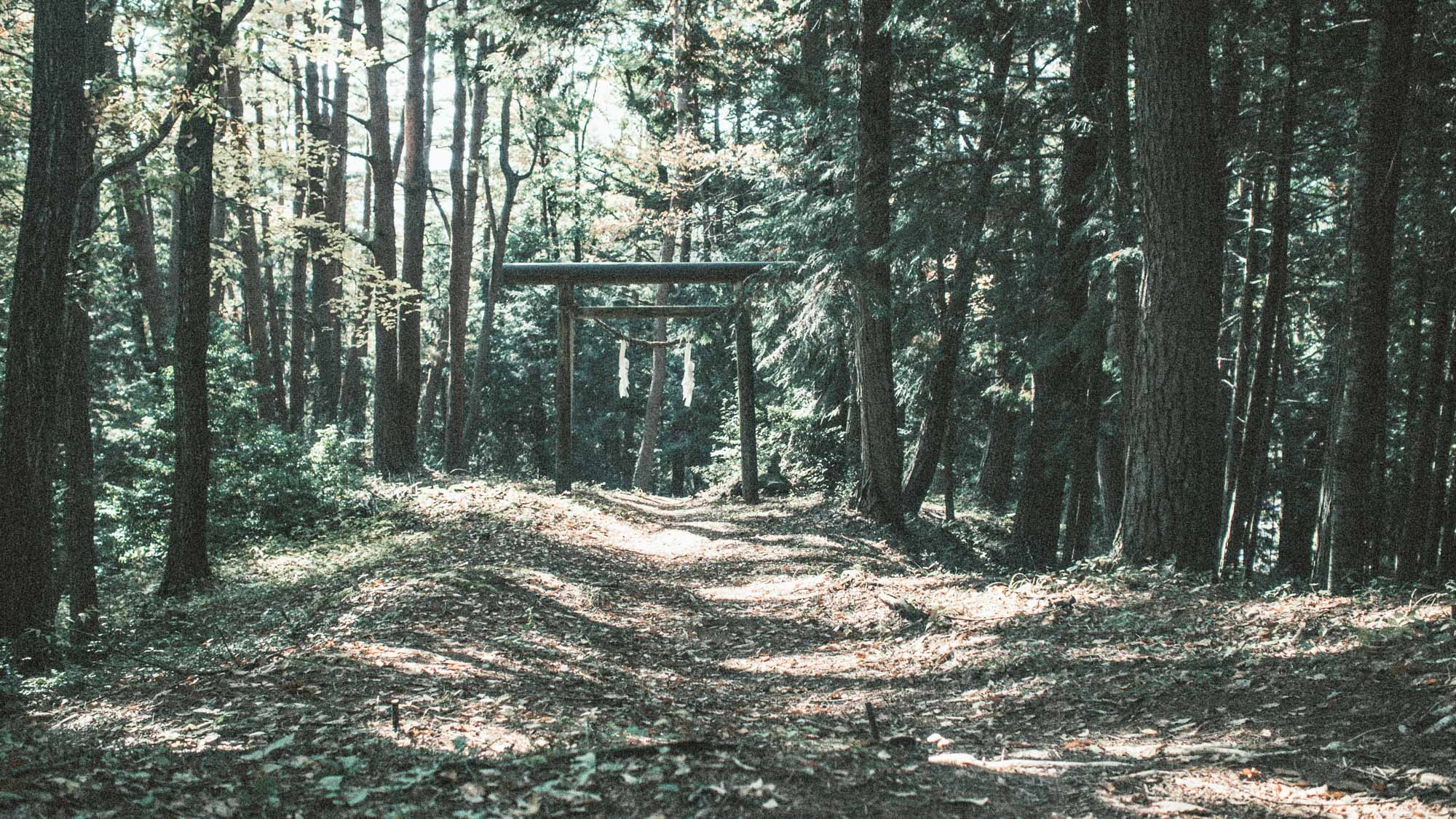
Forest Bathing becomes international
Following the strong success achieved in Japan (about 5 million people practice Shinrin-yoku in the country alone), forest bathing has also become very popular internationally. Today, in fact, it has many followers also in the West, the Duchess of Cambridge herself is a fan, as reported by The Guardian. In this regard, in England, many institutions are promoting this practice as a way to relieve daily stress.
One of the leading figures on the subject, Quing Li, president of the Society of Forest Medicine in Japan and author of the book Shinrin-Yoku: The Art and Science of Forest Bathing, commented:
"Shirin-yoku is for all intents and purposes a preventive medicine. People spend most of their lives indoors. In the case of the Japanese it is 80% of the time, and in the case of the Americans it is as much as 90%. But man is made to live outdoors. We are designed to be connected to the world of nature".
You have to try the Shinrin-yoku
Forest bathing is an easy and inexpensive activity. In fact, it can be done at any time, whatever the weather conditions and does not require special equipment or physical fitness. You can build your experience to measure and according to your needs.
In Japan, the Forest Therapy Society is a non-profit organization that identifies areas with forests and pedestrian roads that have been scientifically evaluated. Here you will find a certified "forest bathing effect". Currently, 62 areas have been certified in Japan, each of which offers "forest therapy roads" with wide access paths suitable for quiet walks, some of which are also wheelchair accessible.
In Italy, we find several destinations equipped for forest bathing, first and foremost Trentino Alto Adige. In fact, on the Renon plateau and in Fai Della Paganella, we find nature guides specialized in "balance excursions" and a "Parco del Respiro". It is precisely this region, in the last few years, has put a lot of emphasis on full immersion experiences in nature, including forest bathing.
But that's not all, also in Piedmont within the Zegna Oasis, we find three paths dedicated to forest bathing, which are unique in Europe.
Focus on: Nambu ironware
If we think of typical Japanese furniture, we immediately think of an iron teapot, also known as Nambu ironware.
The Nambu ironware and its history
Author: Erika | Source: Tokyo Weekender
Nambu Tekki, or Nambu ironware, is a specific method typical of the city of Morioka in Iwate Prefecture. Created in the middle of the Edo period, this art is named Nambu after the feudal domain of the same name. Modern techniques also use the molten metal produced near Morioka, in Sendai or the present-day town of Oshu.
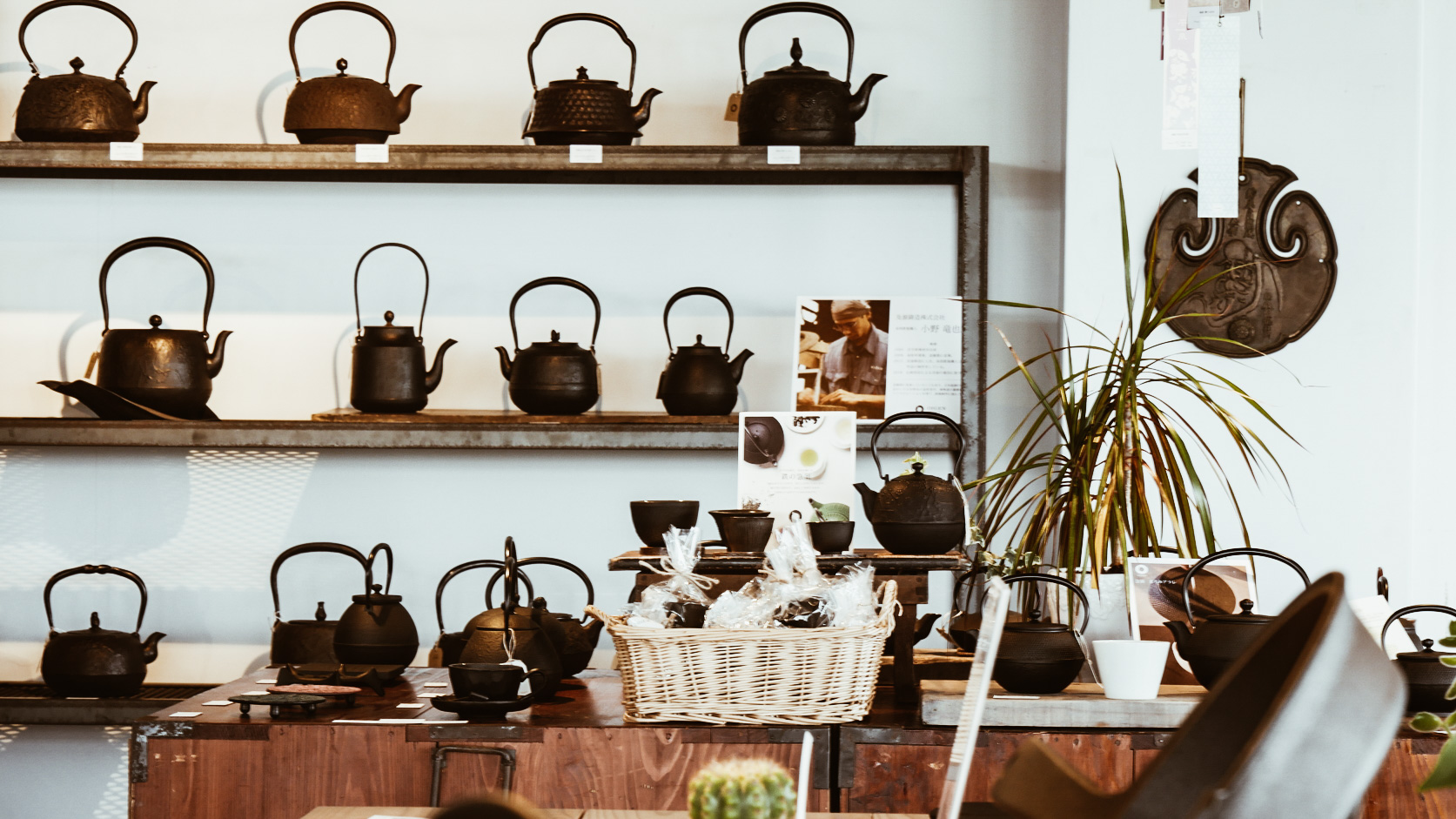
Rust-resistant, durable and well-insulated, these objects provide uniform heat circulation. In fact, the outside of the kettles has an irregular texture called ploughing or hail. This is often used in Nambu ironware dishes and kettles are the representative product. However, the various models change from artisan to artisan because each artist is free to create his or her own model at will.
The History of Nambu ironware
Nambu ironware products sink their history into the production of tableware for the Tea Ceremony during the homonymous domination in the middle of the 17th century. Thanks to the abundance of iron resources, Morioka was a perfect area for the foundry industry.
In fact, in 1659, a feudal lord who wanted to promote the tea ceremony ordered Nizaemon Koizumi to move to Kyoto. It was here, in the area around the castle in Nambu, that the kettles began to be made.
The Koizumi family
Craftsmen par excellence during the Nambu domain, this family launched for the first time the pots used for the tea ceremony. The tea casting technique and control were passed down from father to son. Not only traditional products, but this family was also the focus of innovations for the time. In fact, the famous Nambu Iron Kettle was invented by the third generation of the Koizumi family. The Taisho Emperor himself, who reigned from 1912 to 1926, visited the Tohoku region for this family. In fact, in 1908, on the occasion of the visit, the eighth generation of the Koizumi showed the emperor the production process of these iron tools. This event was so famous that all the national newspapers of the time talked about it. In fact, even today, all the pieces produced in the Morioka and Mizusawa areas in Iwate are still called "Nambu Ironware".
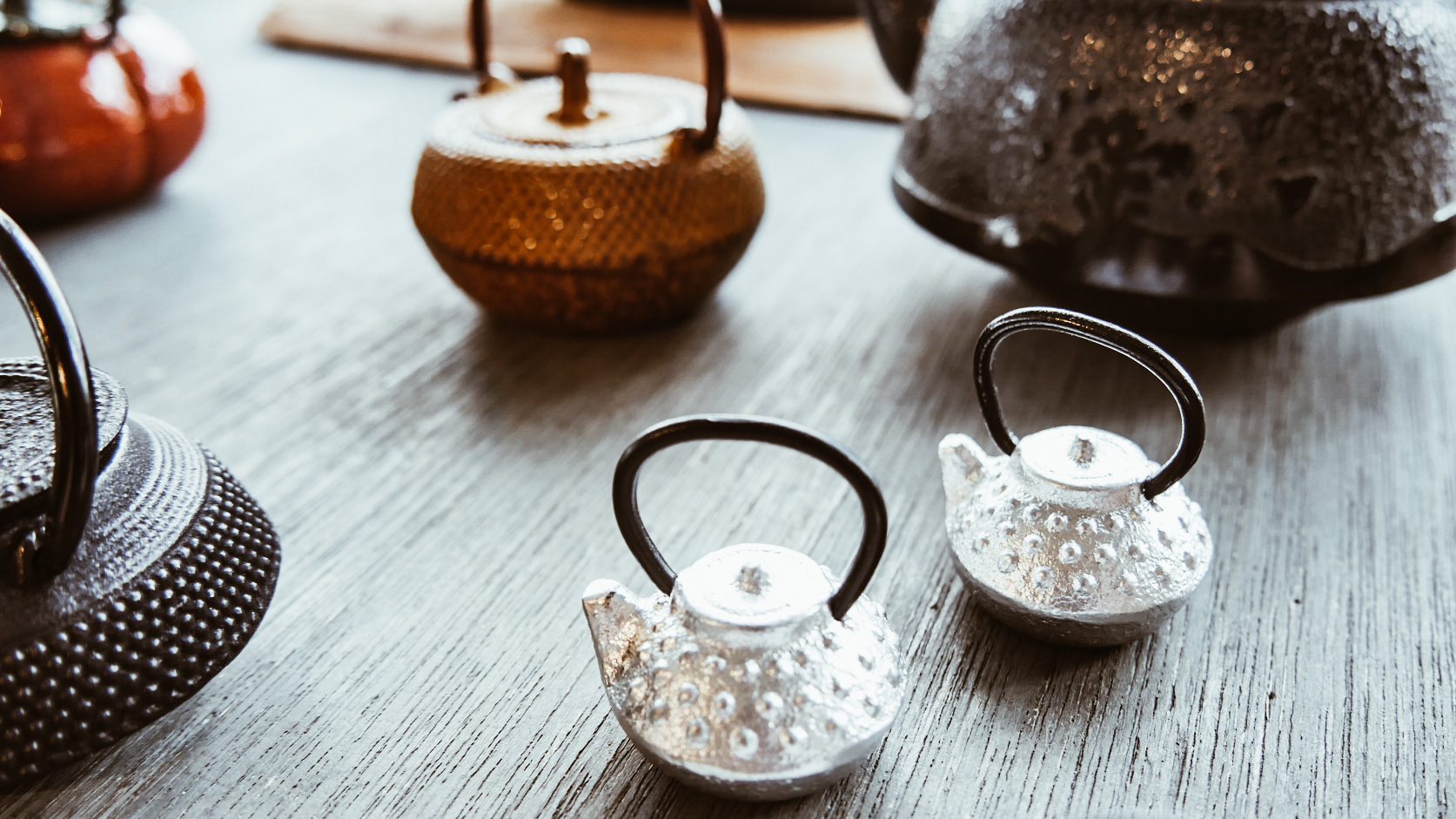
More than just tea
Although the products related to the tea ceremony are the most famous among the Nambu ironware, there are many other items related to the home that can be purchased. In fact, Western kitchen cooks know that one of the best investments you can make is a cast iron frying pan.
However, other Nambu ironware items that are worth buying are the furin (the Japanese windchimes), incense holders, small decorations but also chopsticks holders.
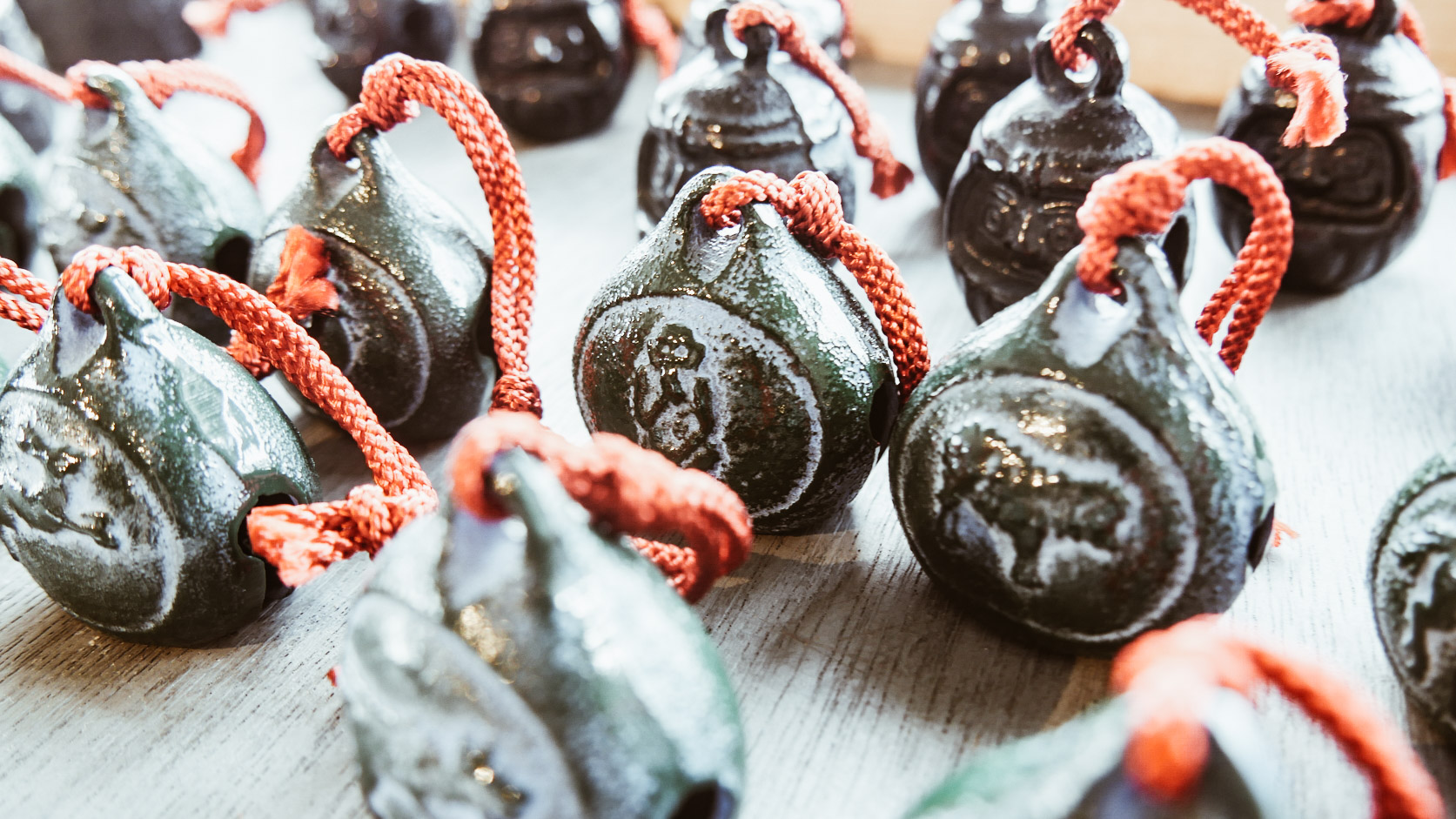
Have you ever bought any of these items or would you like to take some? Let us know in the comments or on our Facebook page!
Photo Gallery: Kyoto without tourists
The pandemic is slowly passing and the tourism industry in Japan, as well as in Italy, has suffered a severe blow. We are not yet entirely allowed to resume travelling, but it is at these times that we have to find the beauty of things. We also refer to the possibility of being able to discover landscapes and corners of cities that we could not see before, often also because of tourists. As a highly desirable destination for tourists, Kyoto has developed a love-hate relationship with visitors. With 8.31 million tourists from overseas, the ancient capital is definitely one of the most popular cities in Japan.
Kyoto without tourists, a leap into the past
Author: Erika | Source: The Japan times
However, tourism is always a bit of a double-edged sword. While it prunes a lot of revenue to the visited countries, it also leads to overcrowded cities. In tourist places like Kyoto, it is really rare to be able to enjoy the landscapes without visitors. Nevertheless, due to COVID-19 and the closing of world borders, the number of visitors has dropped dramatically, leaving many of these places undisturbed. Through these photos, taken by the reporters of The Japan Times at the end of April, we can see a deserted city and admire its monuments in all their splendour.
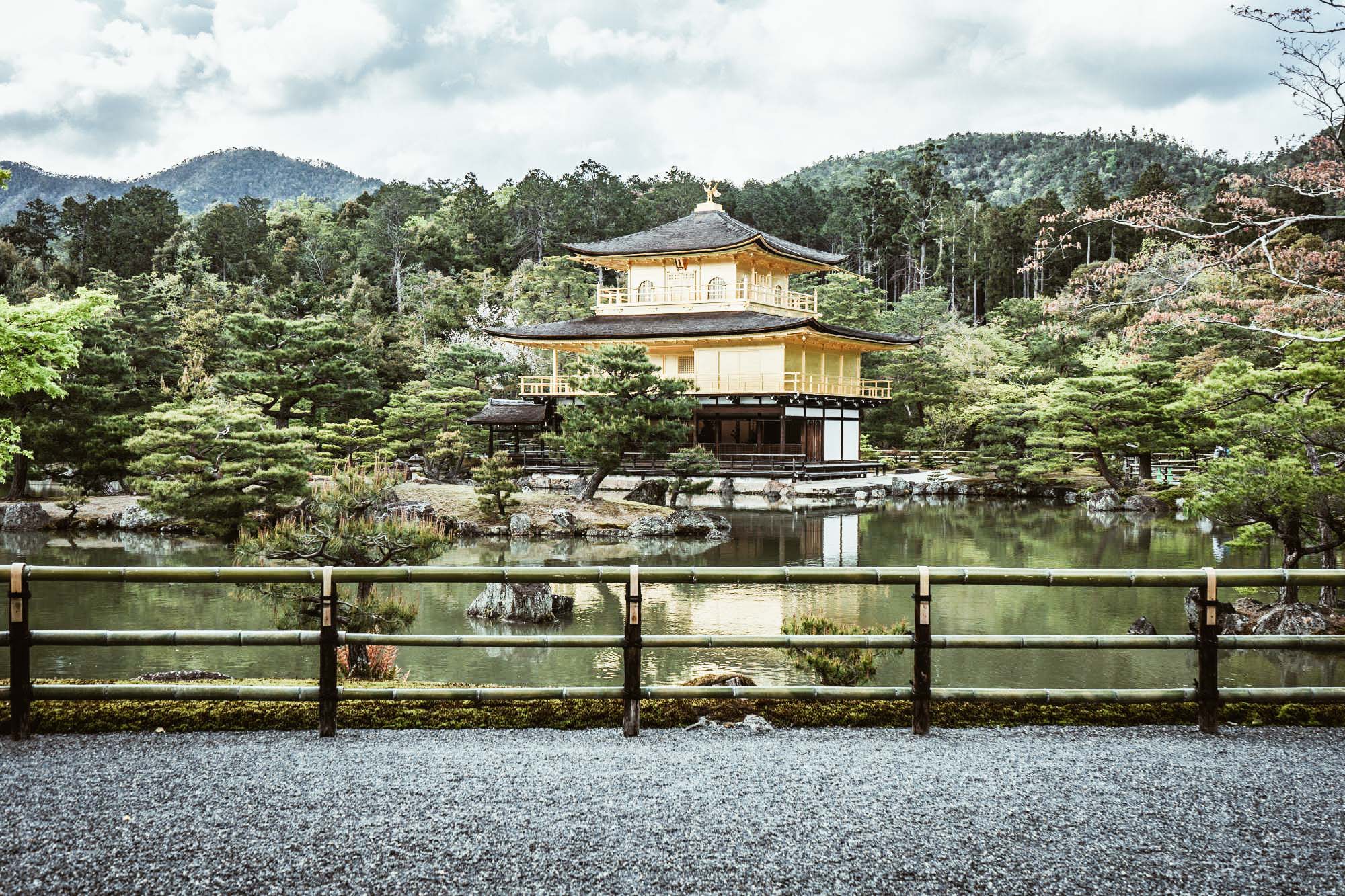
One of the most famous sites and destination of many tourists is certainly the Kinkakuji, also known as the Temple of the Golden Pavilion. Declared a UNESCO World Heritage Site in 1994, this landmark has more than 5 million visitors a year. The current pavilion dates back to 1955 after the original was burned by a novice monk. However, the complex dates back to the 14th century. - Photos by Oscar Boyd

Fushimi Inari, a destination that every year attracts about 2.7 million visitors, a landmark known for its senbon torii (1000 torii, even if in reality they are 10 thousand in total), was like this. Those who have been there are aware that to be able to take such a picture under normal conditions you have to go there very early in the morning and wait several minutes to get the perfect shot of the empty tunnel. The photographer Gabriele Bortolotti took this picture at noon, in a deserted sanctuary at the end of April.
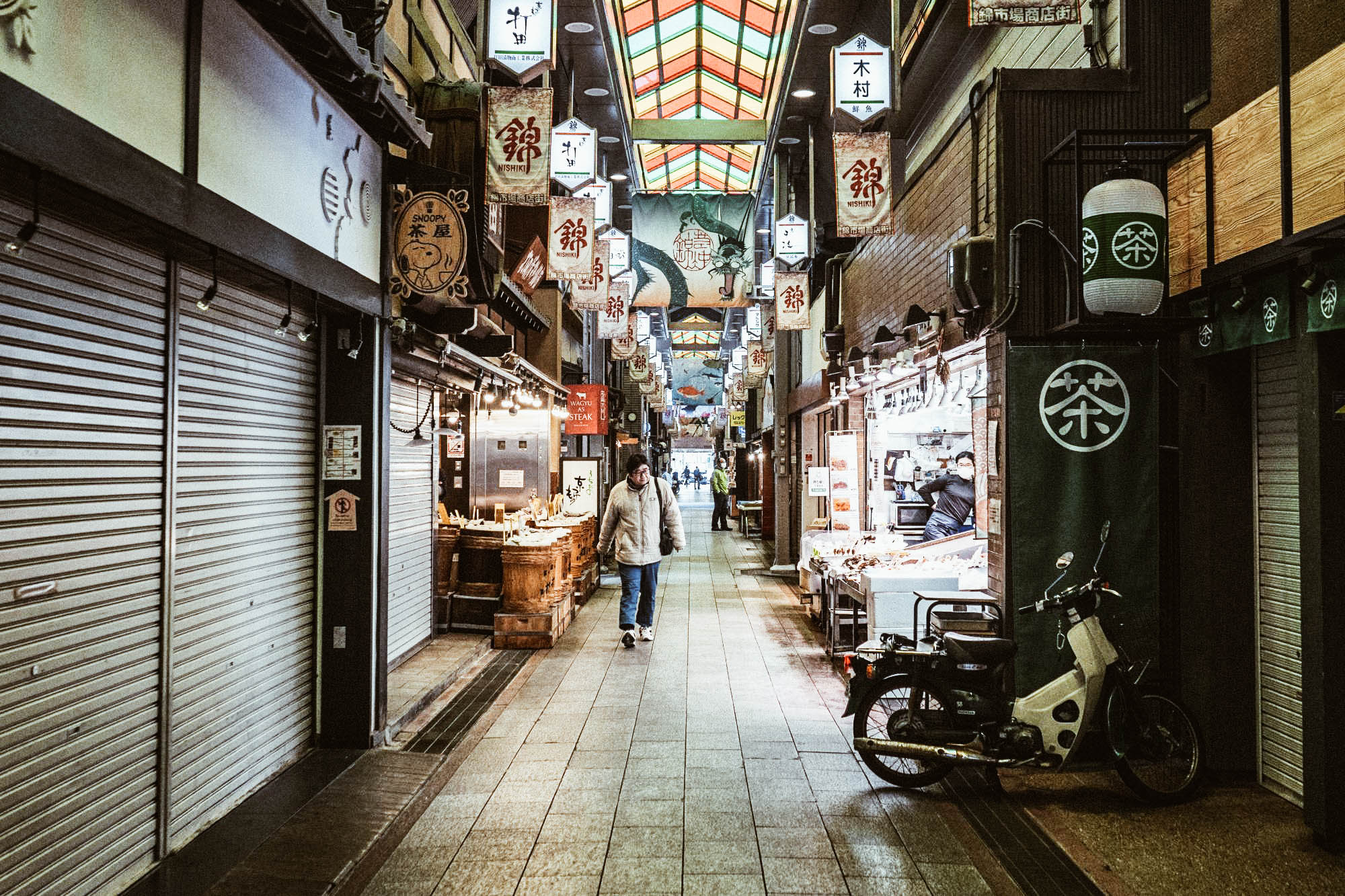
Nishiki's market, also known as "Kyoto's Kitchen" stretches for about 1.5km between Teramachi and Shinmachi districts in Kyoto. Among the increasingly popular souvenir shops, knife shops, the headquarters of traditional Japanese food suppliers and everything related to the kitchen, Oscar Boyd took this photo.
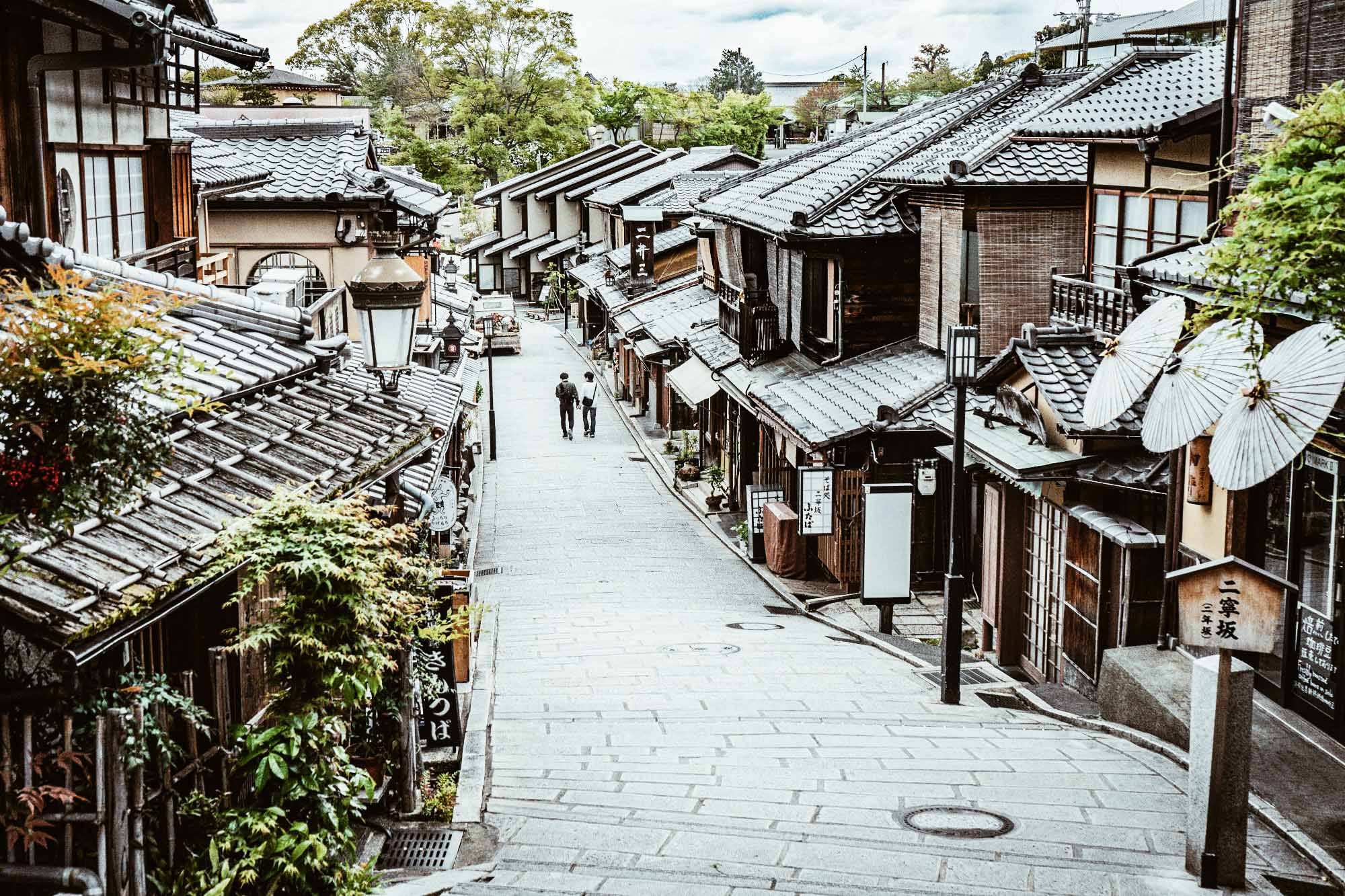
We move on to the wooden architectural tradition of Higashimaya. This area is very popular among people looking for a traditional Japan, without cement, glass and neon. This is how it looked under the eyes of Oscar Boyd at the end of April 2020.

Ginkakuji, the Silver Pavilion, built in the 15th century in the style of the Golden Pavilion, was not originally covered with the precious material. The complex has since become famous for its large Japanese garden which attracts around 5 million visitors every year. - Photos by Gabriele Bortolotti
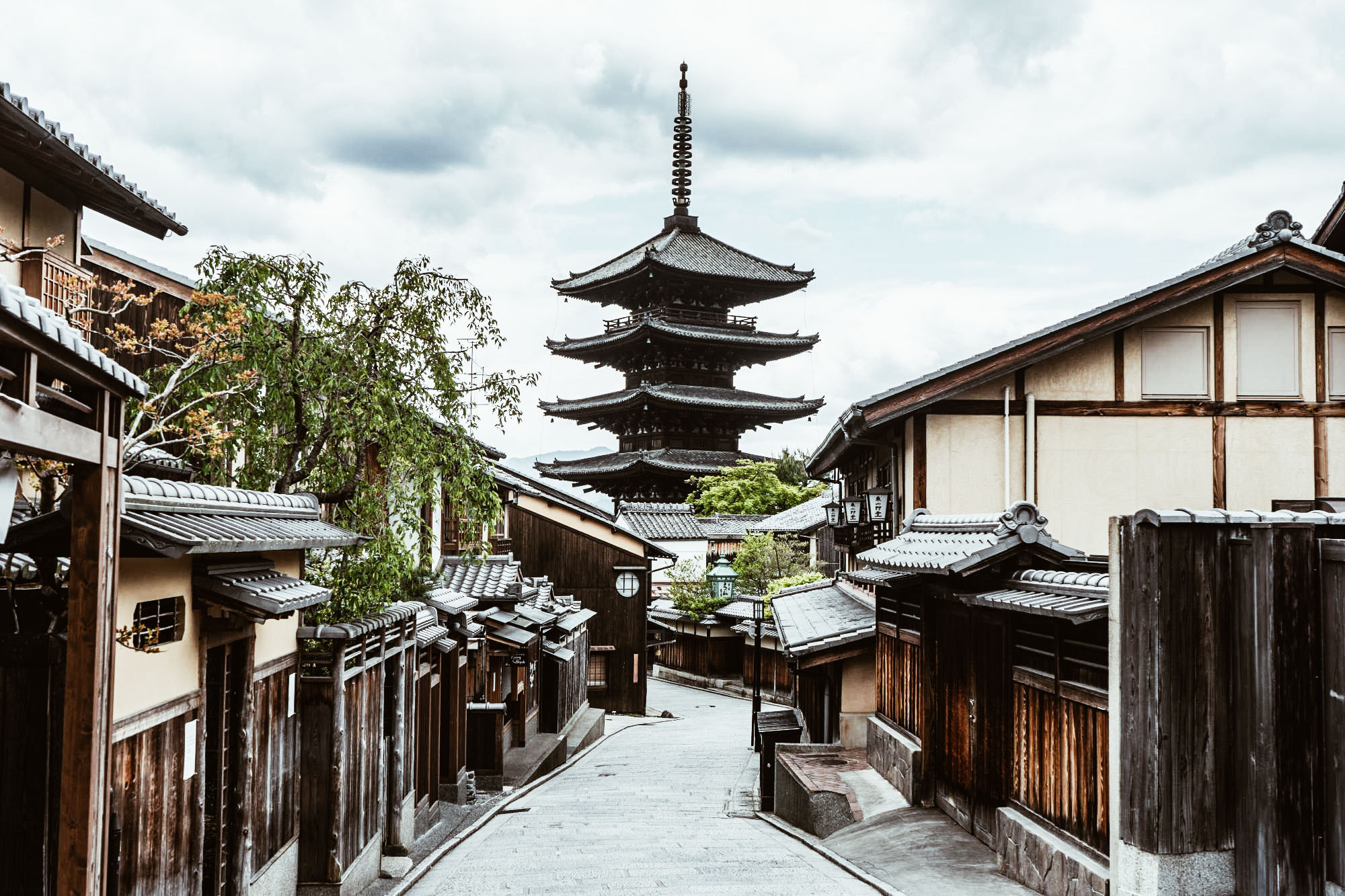
The Yasaka Pagoda, one of the landmarks of the upper area of Higashimaya District, the last permanent structure of the 6th century Hokanji Temple looked like this at the end of April. - Photos by Oscar Boyd
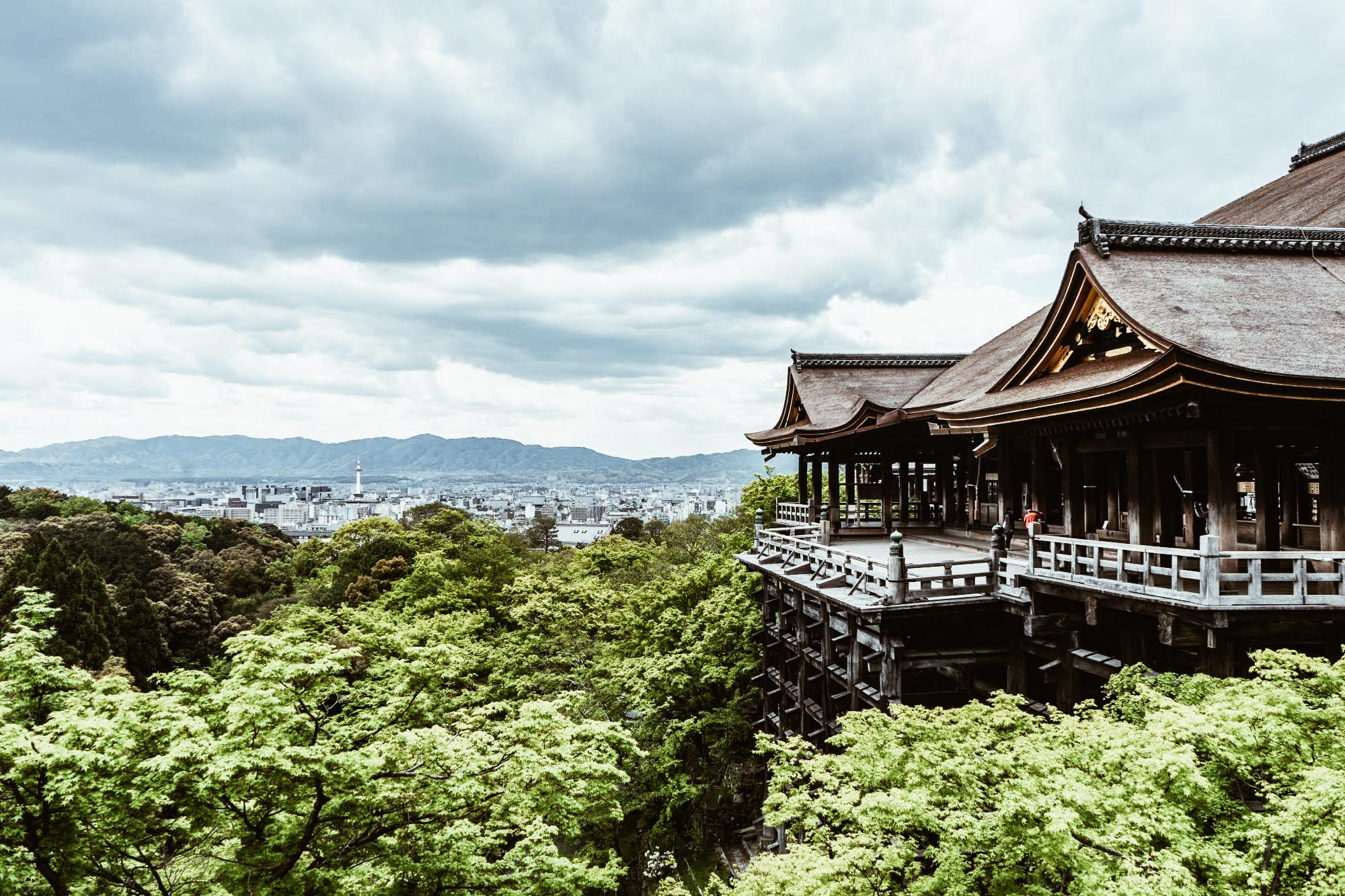
A UNESCO World Heritage Site, the Kiyamizudera temple on the side of Mount Otowa, in the eastern part of Higashimaya district is one of the landmarks not to be missed by visitors to Kyoto. Founded in 780 and rebuilt after a fire in the 15th century, work on the Okunoin Hall was completed in March. The temple attracts about 5 million tourists every year and yet in this weird 2020, it was completely empty. - Photos by Oscar Boyd
Shikadamari, the deer gathering in Nara
One of Japan's most characteristic cities is Nara together with its deers and every year it is here that the Shikadamari takes place. But what exactly is this strange and unique phenomenon? What drives hundreds of deers to gather for an hour at this place in Nara Park every evening in summer?
Shikadamari, the phenomenon of the deer gathering in Nara
Author: Erika | Source: Soranews24.com
If you have ever been in the city of Nara, near the prefecture of Kyoto, probably one of the destinations you will have seen is Nara Park and its large deer population. The peculiarity of these deers is that they roam the city undisturbed, but not only that, they also ask for a lot of cookies! For this very reason, you may have had to run away from one of them while this curious deer was poking its nose into your bag.
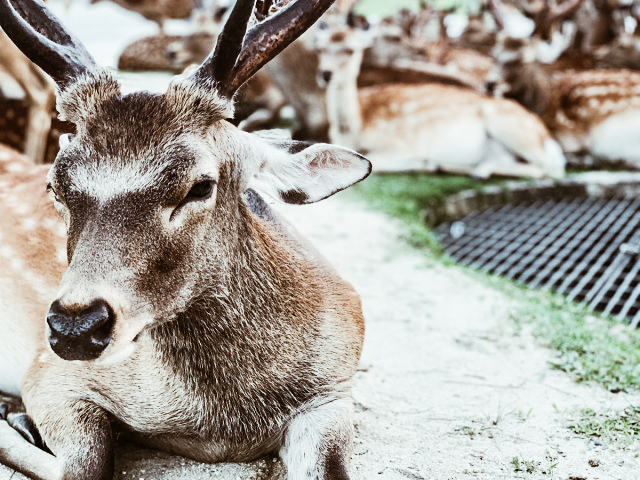
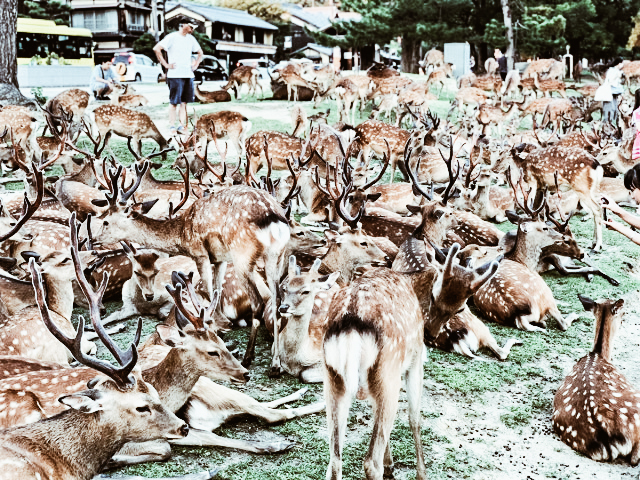
However, if you've come to this city in the summer, you'll find these nice creatures much less noisy in the evening. In fact, after sunset, a very particular phenomenon called "shikadamari" happens. This Japanese term translates as "deer gathering point" and is an unofficial term coined especially for this wildlife event.
What is Shikadamari
After sunset on summer evenings, around 6:30 p.m., deers gather near Nara Park to stop in this particular place in front of the National Museum of Nara, right inside the park. Indeed, it is not unusual to find deers relaxing in the park, but it is rare to see a large number of these animals all gathered in the same spot. The most disconcerting thing is that they all gather in the same place, at the same time and for the same amount of time. From 6:30 p.m. to 7:00 p.m., you can see the deers sitting in silence. However, after 7:00 p.m., they stand up and return to the different areas of the park.
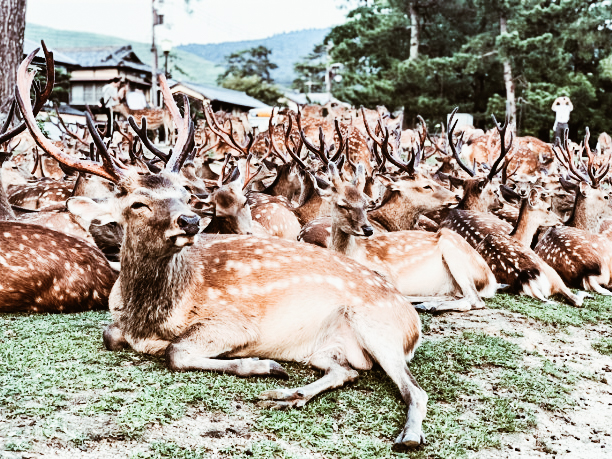
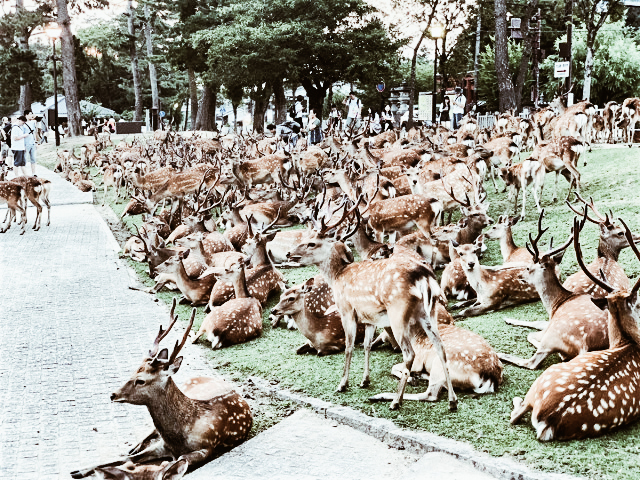
According to a survey by the Nara Deer Preservation Foundation, the Park is home to about 1388 deer, and almost half the wildlife population participates in this gathering. What could that indicate?
Plausible explanations
Therefore, one of the plausible explanations for this phenomenon is that deers gather in this particular place to cool off. After all, with the hot temperatures of the Japanese summer, in this place we find a breath of fresh air instead. Despite everything, this very piece of land in front of the museum is one of the sunniest parts of the entire park during the day. Theoretically, therefore, the earth is very overheated, but perhaps it is this mix of warm earth and fresh air that attracts the deer to the shikadamari.

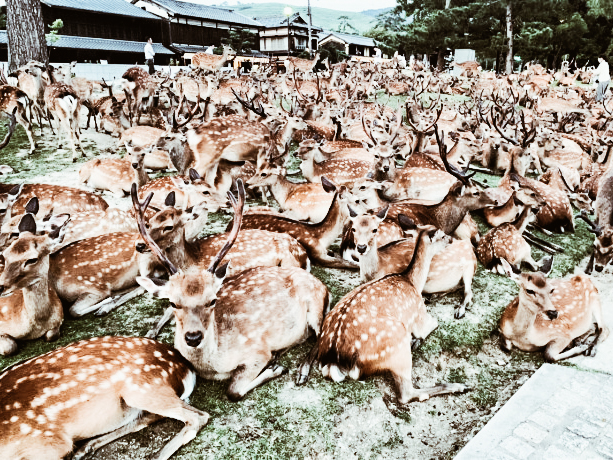
In this regard, the Nara Deer Preservation Foundation says:
"We have reports of deer gathering in front of the Nara National Museum. We don't even know why they gather there. We're sorry we can't be of any help".
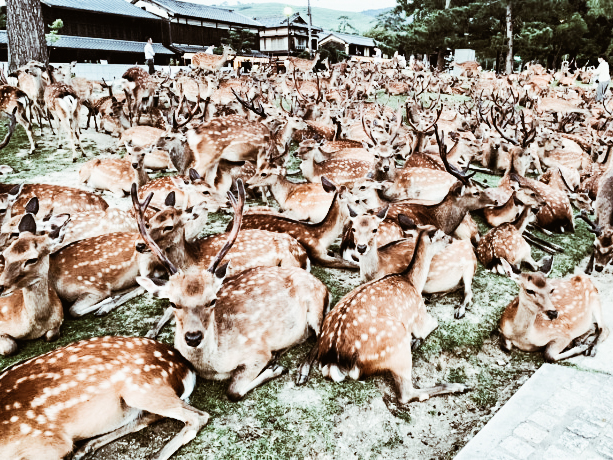
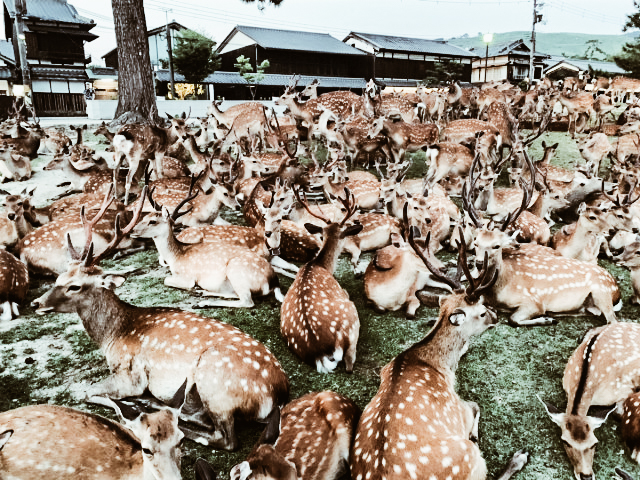
With this answer, therefore, the Shikadamari phenomenon remains to all intents and purposes one of the mysteries of Japan. And do you have any particular idea why deer gather every night in summer at this very spot in the park? Let us know on on our Facebook page or in the comments below!
Wood and Japanese architecture
If you have ever been to Japan or even seen photos, you will have noticed that Japanese architecture is characterized by the use of wood as the primary material. Today we see how this traditional material has become an emblem of Japanese architecture.
Wood, mold and fire in Japanese architecture
Author: Erika | Source: Nippon.com
Japan's wet environment has made it possible to develop an architectural style mainly focused on the use of wood. In fact, in summer, humidity levels reach peaks that we can hardly conceive of here in Europe. However, if you have been to Japan during the months of June and July, you will have noticed that you sweat even while standing still. For this very reason, in the history of this country, techniques and materials have been developed to help compensate for this problem. In fact, the raised floors and open spaces typical of traditional houses have guaranteed adequate ventilation to combat the accumulation of toxic mould. In addition, the wooden construction with mullions and beams not only helps against moisture but also becomes useful in the design for resistance to typhoons and earthquakes.
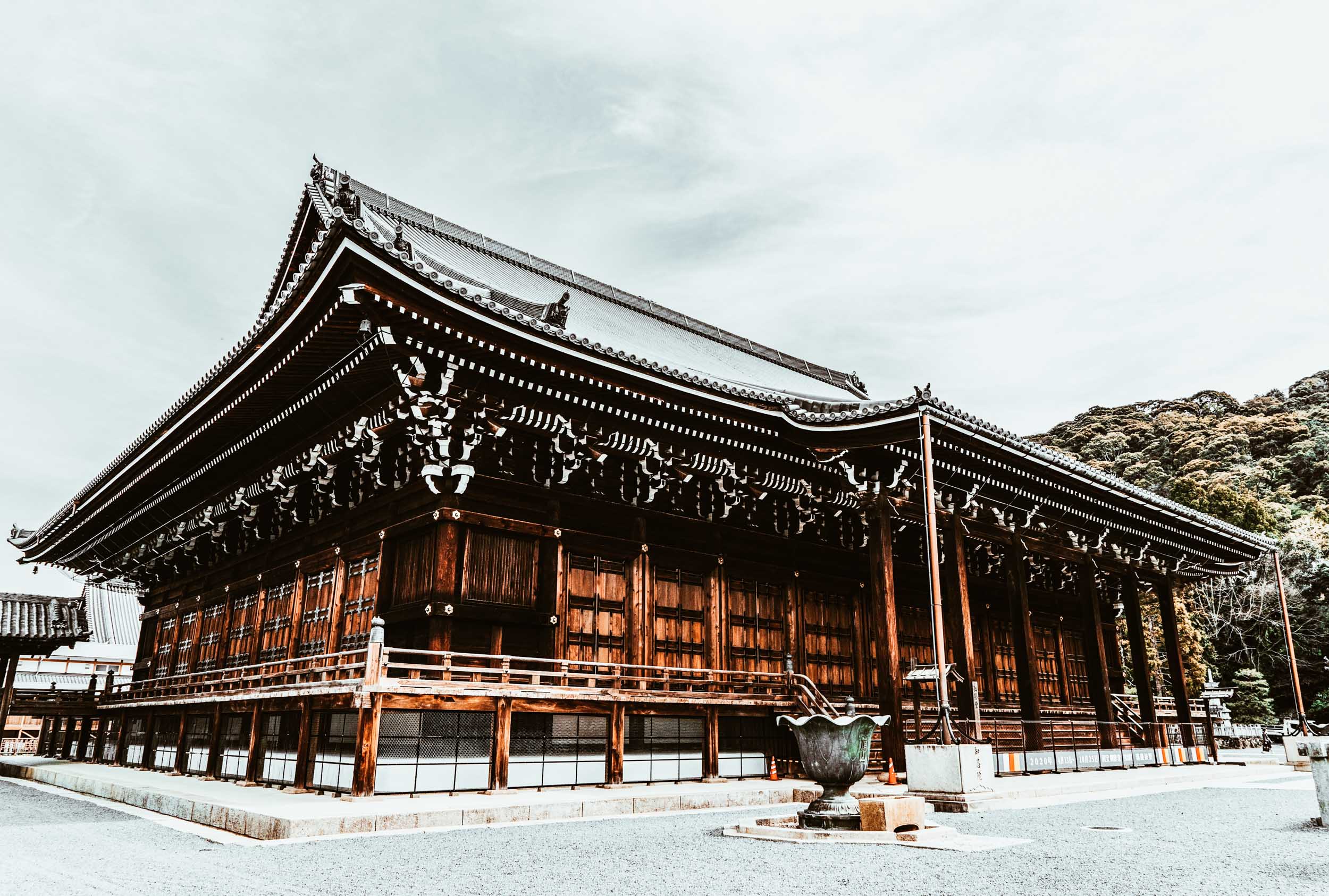

Although fires have been frequent in the history of Japan, historically the Japanese have built almost exclusively with wood. Certainly, the fire was a persistent problem and this is reflected in the severity of the current fire laws. However, judging by history, it seems that the major cause of the problem was the natural disasters that led Japanese architecture to take the forms we all know.
The constant presence of mould in Japanese architecture
Actually, mould is a constant problem not only for Japan but a little bit for the whole world. In fact, today we were able to create a solution by applying modern architectural techniques.
Much of Japan has ideal conditions for mould because of the various types of mushrooms present in the country. In addition, temperatures rarely fall below zero and humidity can last over 70% for long periods of time. These are all ideal conditions for mould to form, but traditional wooden construction alleviated this problem. In fact, with these construction techniques, the building was raised from ground level leaving the walls open so that air could flow freely in the spaces. Because of this problem, older buildings contain very little furniture and equipment. Temples, sanctuaries, palaces and traditional houses fall into this category.
Japan and tradition
As we all know, Japan is a very traditionalist country and Japanese architecture is no less. However there is a strong preference for the new, in fact, large companies do not hide to design houses to last about 30 years, after that the house should be demolished and rebuilt. This is almost inconceivable from a Western point of view, but reconstruction is a perfect way to completely eliminate mould, infestation and other problems.
The culture of reconstruction has, in fact, ancient roots in Japan because until the 8th century AD the death of an emperor was the cause of the displacement of the royal palace and the capital. Moreover, there was a saying in the Edo period that read "fire is one of the two flowers of Edo, as the city often blossomed". Whether the cause was fires or abrupt changes, these reasons have significantly lowered the average life of buildings. However, moving a house meant throwing everything except the wooden structure, the framing was in fact dismantled and reassembled with a fresh roof and curtain walls. In fact, this not only solved the problems of mould or other problems but also preserved the most durable parts of a house. Precisely for this reason, today we find extremely old and recycled beams and columns in many farmhouses.
Wood VS Metal
During the Tokugawa Shogunate, political decisions limited the use of metal fasteners and this was also an important factor in the development of carpentry in Japanese architecture. In fact, despite the fact that steel was already widely used, metal fasteners had no comparison with the longevity of wooden joints. In fact, in unseasoned wood, these fixings were strongly subject to seasonal shrinkage and expansion of the surrounding material. Also, when exposed to air, they are subject to rapid oxidation due to Japan's humid climate.
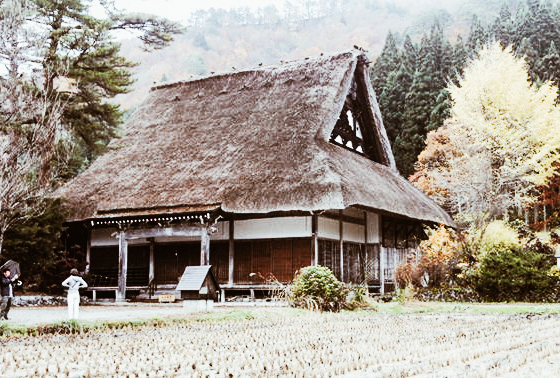
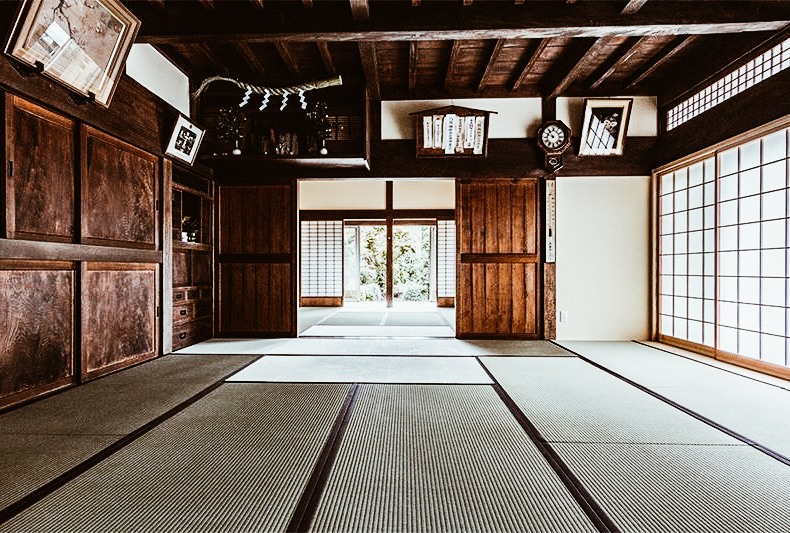
On the contrary, an all-wooden junction becomes stronger and stronger as time goes by. In fact, calculations show that the latter may be structurally more solid even in the centuries following construction. Wood gains in strength for 200-300 years after being cut, but gradually decreases after that. For this very reason, the heavy roofs of traditional Japanese architecture are impossible to build without an elaborate wooden structure.
To withstand the weather and typhoons, these roofs should be supported by large stone walls, but in a country where earthquakes are so common and typhoons so devastating, it becomes too impractical. In addition, during the rainy season, condensation would occupy and ruin all the walls. In traditional Japanese architecture, the entire wooden supporting structure is open for visual inspection, meaning that any water infiltration was easily identified and handled quickly.
Japanese architecture and earthquake-proof houses
As we well know, Japan is frequently hit by earthquakes that do not seem to create too much damage. This is not because earthquakes are less violent, but thanks to the anti-seismic techniques of Japanese architecture. In fact, earthquake resistance is the third reason why Japanese architecture primarily uses wood in its constructions.
In Western culture, houses are solidly bonded to the foundations, which makes them a solid earthquake-resistant box with walls strong enough to withstand lateral shocks. As a result, the building will move with the ground, however, making the occupants feel the full force of the earthquake. In Japanese culture, on the other hand, construction using wooden joints makes everything more flexible. In this way, the lateral energy of an earthquake is absorbed by the bending of the junctions themselves, allowing the building with a heavy roof to remain standing even during strong tremors. To make you understand better, many old buildings are constructed in a similar way to a wooden chair, with supporting pillars without walls connected both at the top, where the roof rests and at the bottom. This allows you to support the weight safely and dynamically.
Thanks to the use of this technique, most traditional buildings are not based on foundations or basements. However, one might expect that during an earthquake the structure will jump from the base stones, the masonry walls will break and the beams will bend or break. But a well-built wooden building remains standing, in fact even in contemporary construction basic insulation is becoming a standard for seismic design even though it is illegal in Japan.
So many forests equal so much wood
Here is the latest reason why we find this preference for wood in Japanese architecture. In fact, the ready availability of timber and the use in traditional construction, cypress and pine, for example, are ready for harvesting and use only after 40-60 years of growth. Japanese carpenters have in fact become experts in making the most of wood construction techniques for many generations. This has not only allowed us to specialize in the use of this material but has also left us a rich heritage of buildings that are not only cultural heritage, but also teach us in the West to become more sustainable and safe without giving up modernity.
Japanese Patterns
The Japanese are famous for their style and patterns related to kimono fabrics, pocket handkerchiefs and other items that have made history and remain one of the symbols of the land of the Rising Sun. Today we share with you some of the most famous patterns and we will try to analyze them together.
Traditional Japanese patterns, what they are and their meaning
Author: Erika | Source: Nippon.com
The Japanese tradition wants kimono, but also soft towels and other small Japanese objects to be decorated with precise fabrics. In fact, we often find very precise decorations on this type of fabrics. Every decoration and every pattern has a precise name and a well-defined origin that reveals hidden meanings with precise purposes. Here is a shortlist of the most traditional patterns.
Pattern: Uroko (Scales)

Created through the combination of triangles, this fabric resembles the skin of a snake or fish. In tradition, samurai wore clothes with this pattern as a protective talisman against evil.
Kōjitsunagi (Interlaced Kō Characters)
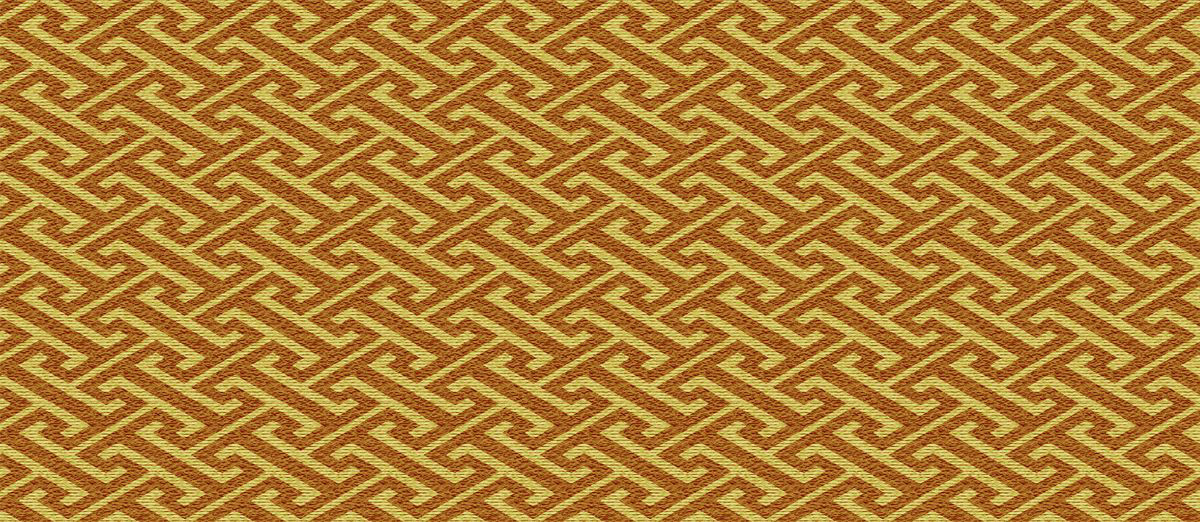
As we often find also in Western culture, the decorations of many fabrics correspond to a precise character repeated in a graphic way. In fact, this model takes its name from the use of the character 工 (kō), repeated interlocking so that the characters seem to stretch infinitely. This type of pattern is associated with luck and is a typical drawing used in materials to create kimonos.
Pattern: Asanoha (Hemp leaves)

Literally called Hemp Leaves, this Japanese pattern has a strong vitality just like the fibre of the same name. Hemp is a plant that grows vigorously without much care. In fact, this is the focus of the pattern that is often used in the creation of kimonos for children and infants in the hope that they too will grow strong.
Yabane / Yagasuri (Arrow feathers)

This Japanese pattern is based on the stylization of hawk, eagle and other birds feathers used in the manufacture of arrows. Behind this type of fabric, as always, we find a deep symbolism. In fact with the pointing to the target, arrows have long been used as a good omen. However, once shot, the arrows do not return, and for this very reason, in the Edo period, brides were given kimonos with this design as a good luck charm. In fact, this pattern was a kind of good luck charm to make sure that new brides didn't have to return to their family home.
Also, in the late seventies, this pattern became famous thanks to Benio, the main character of Haikara-san, a manga for teenagers. In fact, she wore this type of kimono at school and this led to the combination with burgundy hakama, a type of split skirt. This led teenagers to make this Japanese pattern a popular combination at graduation ceremonies.
Pattern: Same Komon (shark skin)

Thanks to the superimposed arcs in small dots, this Japanese pattern is reminiscent of shark skin and hence its name. In the tradition we often find it used by the Kishū Tokugawa family, to which belonged the Shōgun Tokugawa Yoshimune (1684-1751).
Seigaiha (Blue ocean waves)

One of our favourites, this model is reminiscent of the fan waves of the open sea. The name comes from the ancient gagaku court dance called Seigaiha. During these ancient performances, the dancers wore costumes with this very motif.
Shippō (Seven treasures)
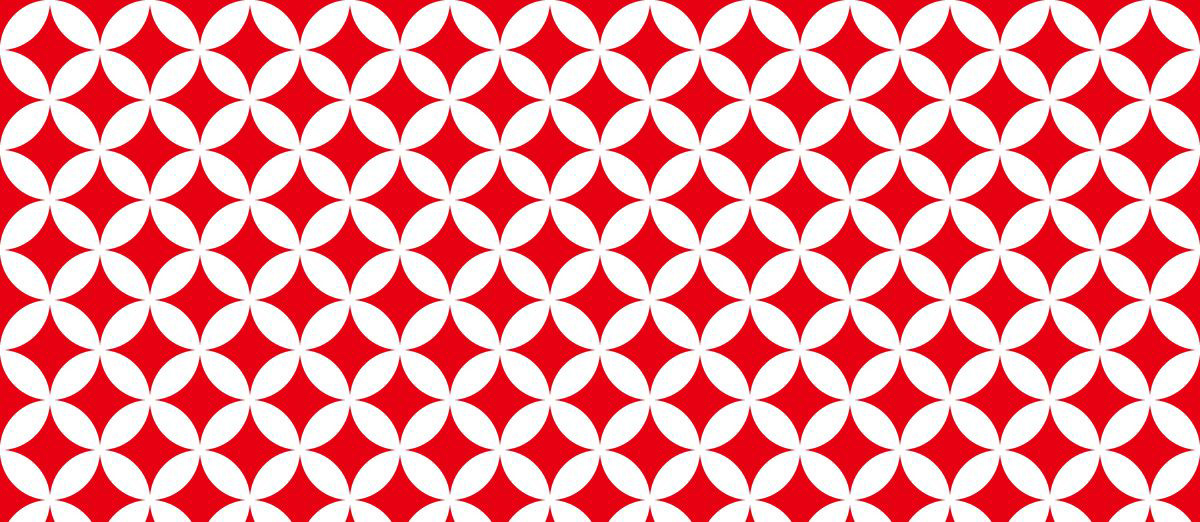
With circles that overlap in quarters resembling petals, their centre forms a shining star. This pattern is given the meaning of good omen for the prosperity of your descendants, good relationships and to bring harmony into your lives.
Pattern: Kikkō (Turtle)
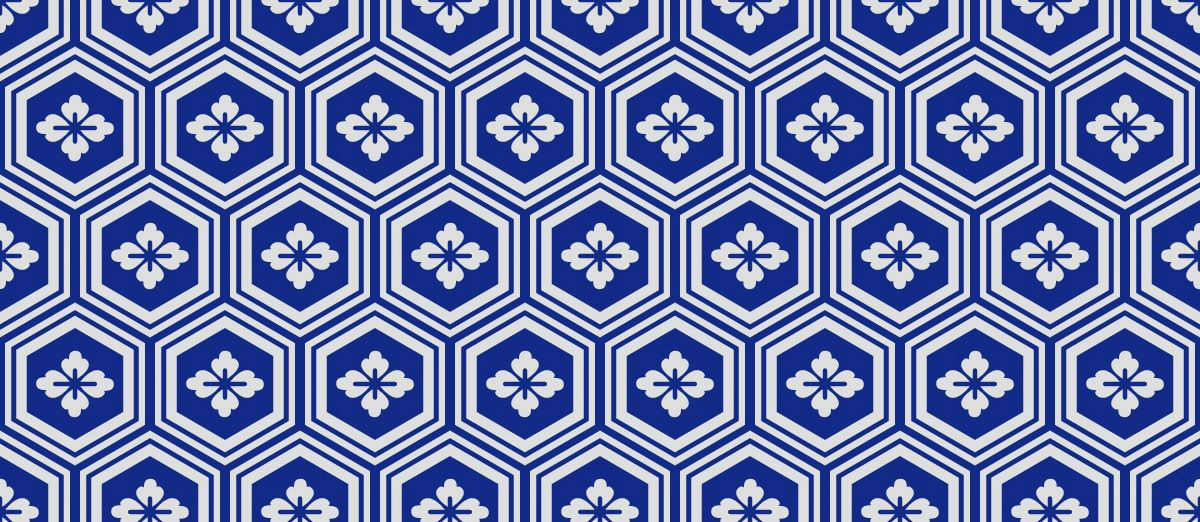
Another auspicious pattern, this design comes from the shape of the turtle shell (hexagon) and that's where it takes its name from. This not only represents luck but also longevity. Depending on how it is composed, the hexagons form different variations for this type of design, including Kikkō hanabishi and Bishamon kikkō. In the former, the centre of the hexagons forms flowers, while the latter is formed by joining three hexagons.
Ichimatsu (chequered)

With several coloured squares arranged alternately, this pattern is very similar to ginkgoam. A common fabric since ancient times, this pattern became famous as Ichimatsu in the 18th century thanks to the kabuki actor Sanogawa Ichimatsu. In fact, the artist loved to use this fabric on his hakama costume. Today we find it in the official logos of the Tokyo 2020 Olympic and Paralympic Games.
Tachiwaki / Tatewaki (rising steam)
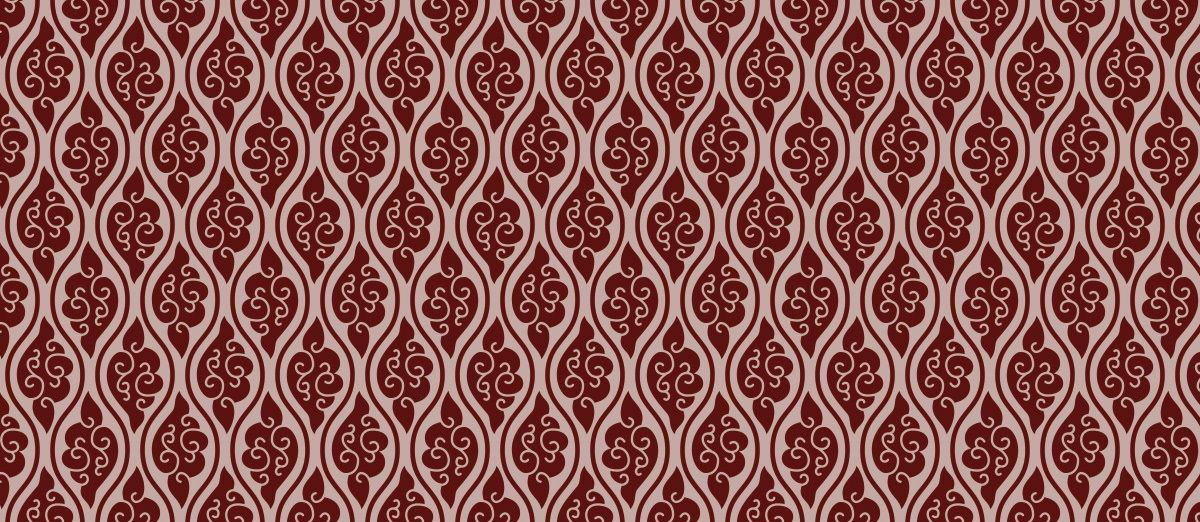
With two curved lines representing the steam rising in a stylized way, this pattern was often used in kimonos for noble and high-ranking people in the Heian period. The way these curved lines are formed serves to create variations called Kumo tatewaku (cloud) and Sasa tatewaku (bamboo).
Karakusa (Winding Plant)
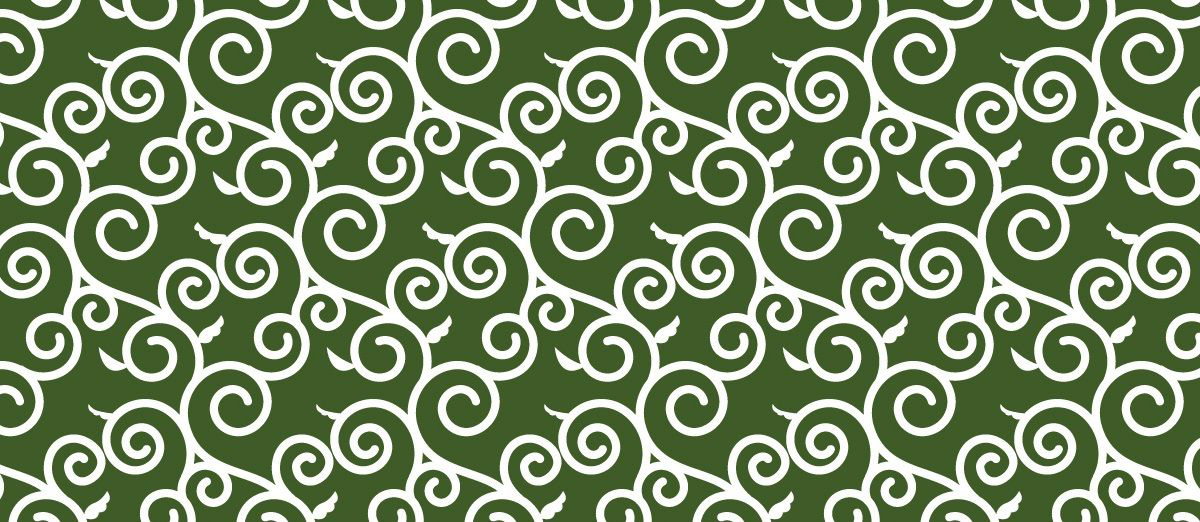
Introduced in Japan with the arrival of the Silk Road, vines and spirals extending in all directions symbolize longevity and prosperity. However, this pattern became famous as a design for furoshiki cloth that thieves used to take away stolen goods. This suggests that this pattern was very popular because in every house you could find a furoshiki with this design.
Kanoko (Fawn)

Resembling the spotted back of a fawn, this pattern is created by hand using a special dyeing technique. However, the laborious process makes it a highly sought after fabric, in fact, kimonos with an all-over kanoko pattern are considered objects of great luxury.
Hishi (Diamond)

Pattern with geometric shapes, this pattern is created when two parallel lines intersect. We often find it on the ceramics of the ancient Jōmon period. Moreover, we find this pattern in different variations that include Waribischi, four diamonds combined to form a single diamond, and Hanabischi, where the petals of the flowers are shaped in diamonds.
Mameshibori (Mame Tie-dye)

This patter was the most common pattern on bath towels in the Edo period. In fact, the name comes from a play on words that means both peas or beans, is robust and healthy. This pattern represents the hope to stay healthy and most of the patterns of the time are created with stencil dyeing or printing techniques. However, under the name of shibori, we can understand that originally the design was made by hand with a particular dyeing technique. In fact, we note that in antiquity, these shapes were much more irregular than the prints of today.
Kit Kat, the 10 most unique flavors directly from Japan
"Have a break, have a Kit Kat" was the famous slogan of the world's most famous snack commercial. However, staying on simple chocolate after a few years is almost "boring". That's why the Japanese have invented several new flavors and associations to enjoy it even with your friends!
Kit Kat, the 10 most unique flavors directly from Japan
Author: Erika | Source: Guilty Yeats

photo credits: fpsconnexion
From Japan to the United States, Kit Kats are now the most famous snack in the world. If you love these bars as much as we do, you may already know the various flavors in the world. However, for those of you who are unaware of these flavors, today we have collected the most famous ones.
Matcha Kit Kat
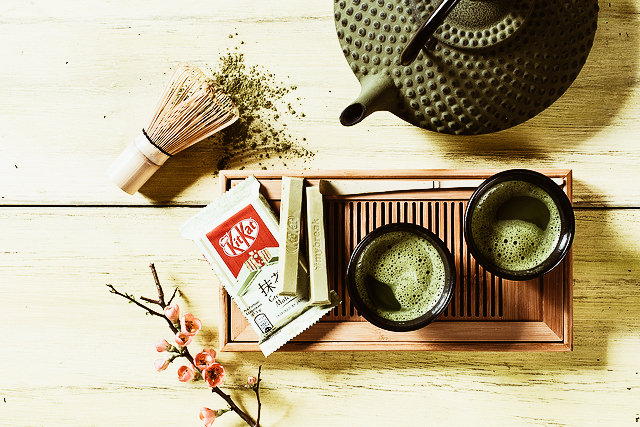
photo credits: wirtschaft-tv.com
Of course, this had to be the first on the list. Already present in several Italian and international supermarkets, the Matcha Kit Kat is certainly everyone's favorite. With the typical taste of Japanese green tea, the Matcha Kit Kat is a very satisfying snack and if you love Matcha as much as we do, then this is the snack for you!
Lemon Kat Kit
You know that citrus and chocolate are always a good match. In fact, Kit Kat has created a special edition dedicated to Lemon Cake and it has in fact depopulated. It actually seems to really eat a lemon cake!
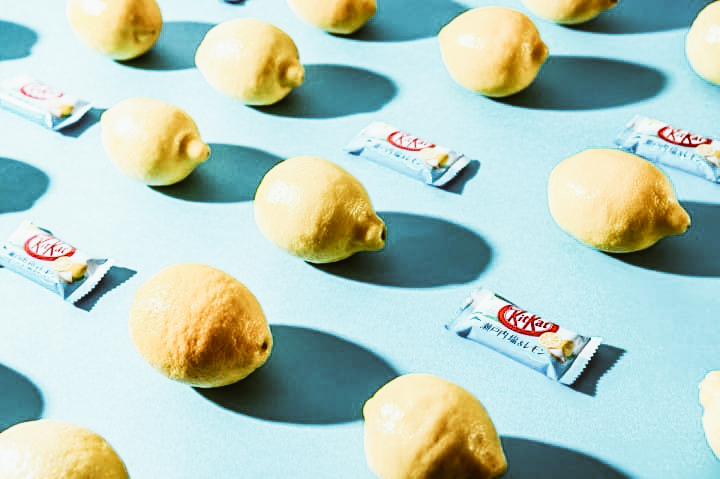
photo credits:matcha-jp.com
New York Cheesecake
The Japanese are a cheesecake gourmand, they have cheesecake for all tastes, so they couldn't miss the cheesecake Kit Kat. Every bite of these bars is like melting a delicious chocolate cheesecake in your mouth. This could be the snack par excellence that can also be used as a dessert!
Red Almond Kat Kit
Cranberries, dark chocolate, and almonds, this is the delicious trio for these bars, a unique flavor. Perfect for a snack at any time, a sweet and crunchy taste with every bite!
Cookies and cream
If you love cookies and cream, this is the option for you! Not only is each bite a creamy biscuit flavor, but combined with the crispy wafer creates an incredible mix. One of the best in the world, we are sure it will satisfy all your sudden cravings.
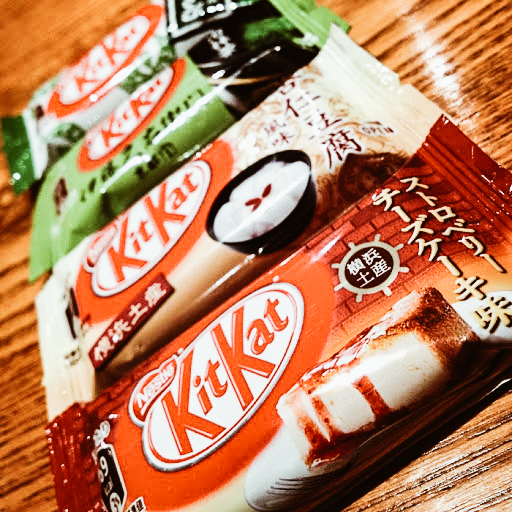

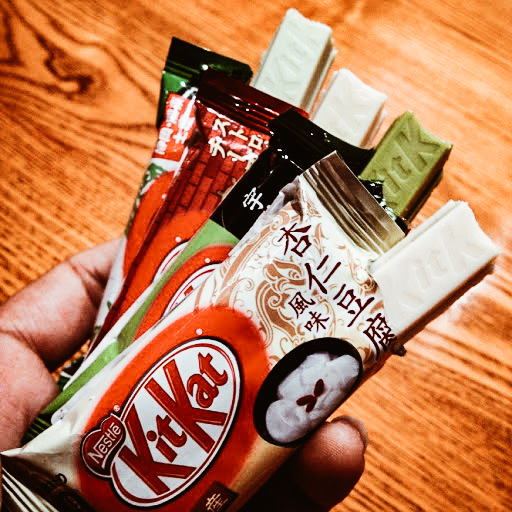
photo credits: wikipedia.org,food-spotter.com
Azuki Beans Kit Kat
Here we go again with the typical Japanese flavors. Sweet but not too much, these bars have a flavor reminiscent of the filling in Dorayaki, but with chocolate in addition. One of the rarest varieties but definitely worth trying!
Strawberry cheesecake
One of the most popular flavors in Japan, these bars should be savored with every bite. Tanks to the strawberry, you will taste these bars as if you were eating a real cheesecake. Also, the crunchiness of the wafer makes these bars have everything you need to qualify as a dessert.
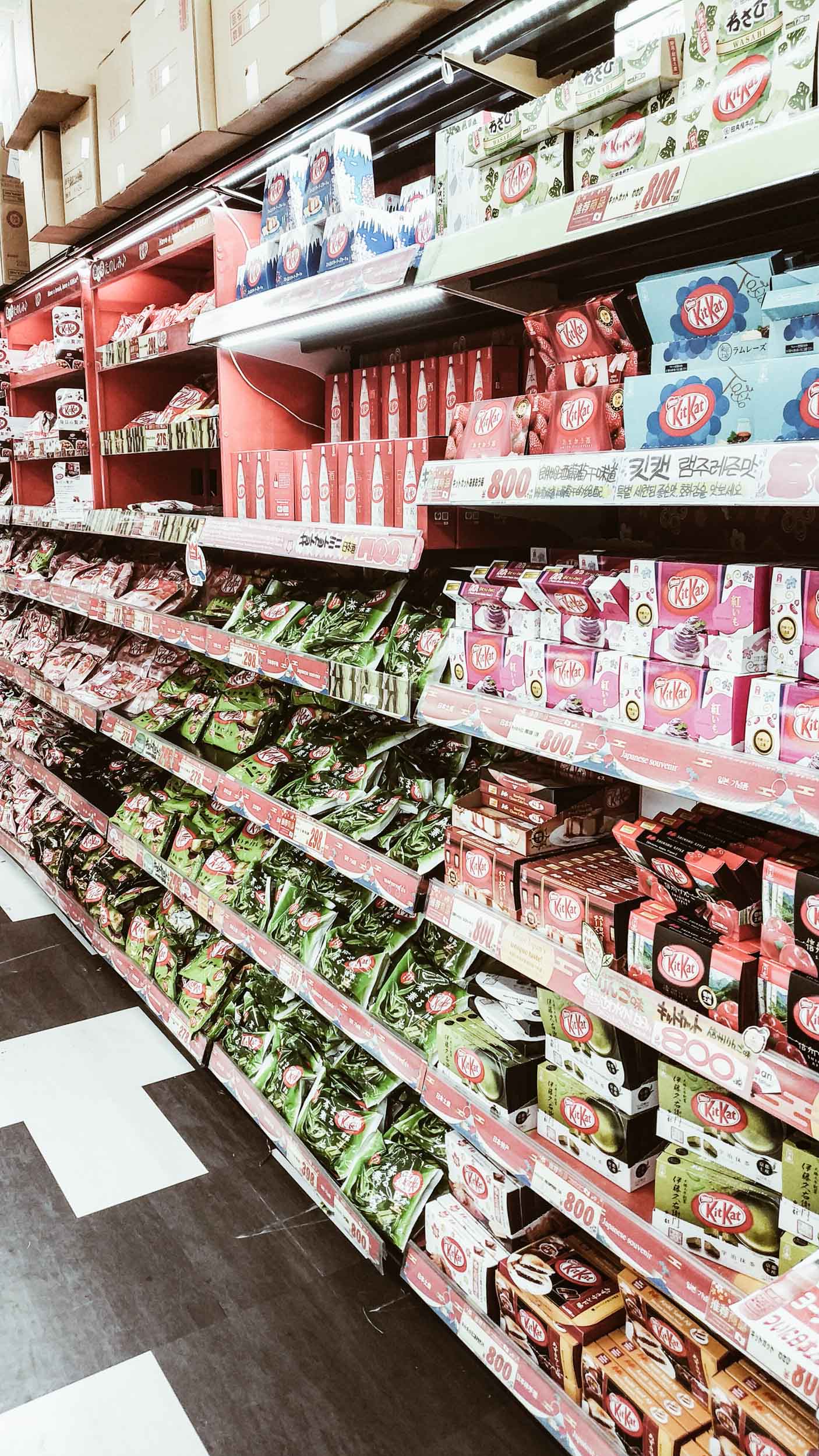

photo credits: wikipedia.org, fpsconnexion
Beni Imo Kit Kat
This is perhaps the most peculiar Japanese taste of all. With the sweet purple potato, it may not seem like the snack to fall in love with, however, once you try it you will change your mind. With just the right amount of sweetness, it also makes it perfect for everyone who doesn't like too sweet snacks.
Raspberry Kat Kit
Another fair exclusive of Japan (unfortunately) is the raspberry one and if you are a fan of this fruit, this bar will become your absolute favorite. In fact, with every single bite, you'll find the crunchiness of the wafer and the freshness of the fruit and if that's not enough to make you want to try them, then we don't know what could do it!
Unfortunately in Italy, it is difficult to find all these flavors, however, you can go to Japanese shops or restaurants in your city and see if they have any available. Alternatively, online shops always offer a wide choice! Which is your favorite?







